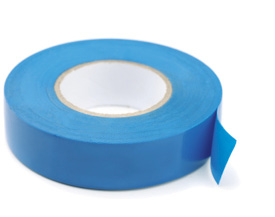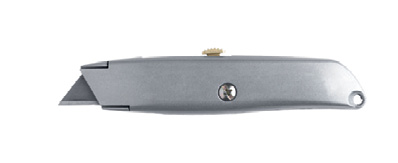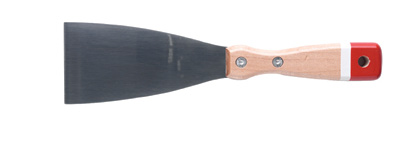THE ALL-PURPOSE TOOLBOX
Before you can tighten a doorknob, hang a picture, or fix a leaky faucet (or attempt the myriad DIY projects throughout this book), you’ll need to equip yourself with the right tools. This first-aid kit for the home will cover the typical pounding and prying jobs that crop up. There’s no problem, in other words, that you won’t be prepared to handle. For how to create a plumbing repair kit, see page 53.

POWER DRILL
A lightweight (9.6-volt), cordless model is versatile and easy to use, and offers go-anywhere drilling. Plug-in models are often more powerful and may be a better option for certain jobs. Most drills come with basic drill bits; supplement as needed.

HAMMER
A 16-ounce curve-claw hammer is the go-to size for most people; test out other sizes and weights to find one that’s comfortable. A hammer with a smaller head is better for driving nails into a wall.

SCREWDRIVER
You’ll need both small and large versions of the flat and Phillips-head models. Multi-head drivers conveniently feature interchangeable tips. A “ratchet action” model doesn’t require resetting after each turn.

STAPLE GUN
A light-duty staple gun lets you repair window screens, replace upholstery, and hang holiday lights (among other decorating tasks). For heavy-duty tacking like installing insulation or weather stripping, look for an electric staple gun with a safety switch.

WRENCH
For everyday assemble-it-yourself needs (furniture, bicycles, etc.), an adjustable (or crescent) wrench is about all you need. Pros prefer socket wrenches for speed and maneuvering in tight spaces, and most come with different-size sockets.


PLIERS
Having a variety will cover most jobs. Slip-joint pliers (above, top) are a general go-to; needle-nose pliers (above, bottom) twist and bend wire and reach into tight spaces; groove-joint pliers (not shown) are great for nuts, bolts, and irregular shapes.

SCISSORS
A sturdy pair of scissors is essential for so many everyday tasks such as cutting kraft paper, tape, and twine. Stainless steel fights rust; those with a non-stick coating will be resistant to adhesives.

HEX KEYS
These usually come in sets of five or more, with the most convenient being held together in a sleeve with a slot for each size. The smallest keys are helpful for electronics and toys, the others for assembling prefab furniture and working on bicycles.

TAPE
Stock an assortment of tapes in 1- to 2-inch widths: blue painters’, for low-tack adhering to painted walls and delicate surfaces; all-purpose masking, for small jobs; duct, for holding items together temporarily; plumbers’ (thread-seal), to help seal pipe threads; and electrical, for wrapping wires and cables.


MEASURING TOOLS
A 1-inch-wide, 25-foot-long measuring tape with a locking mechanism lets you measure most anything. A 9-inch torpedo level (named for its shape) is also a must for hanging anything. A ruler is still a great straightedge, though a yardstick offers more coverage.

UTILITY KNIFE
Basic models will do, as long as they have a retractable blade to prevent accidents. Buy plenty of extra blades and replace often—dull blades are more likely to cause injury by slipping during use. Some models offer tool-free blade replacement.

PUTTY KNIFE
Opt for a few different sizes. Besides its primary role—to smooth putty when filling holes and dents in walls—it can be used as a scraper; just be sure to reserve separate ones for either smoothing or scraping.

ASSORTED HARDWARE
Keep assorted sizes of screws (both flat- and Phillips-head), nails, picture hangers, and anchors and bolts (see pages 74–75 for more information on those) neatly organized in a compartmented tray or container that fits inside your toolbox.